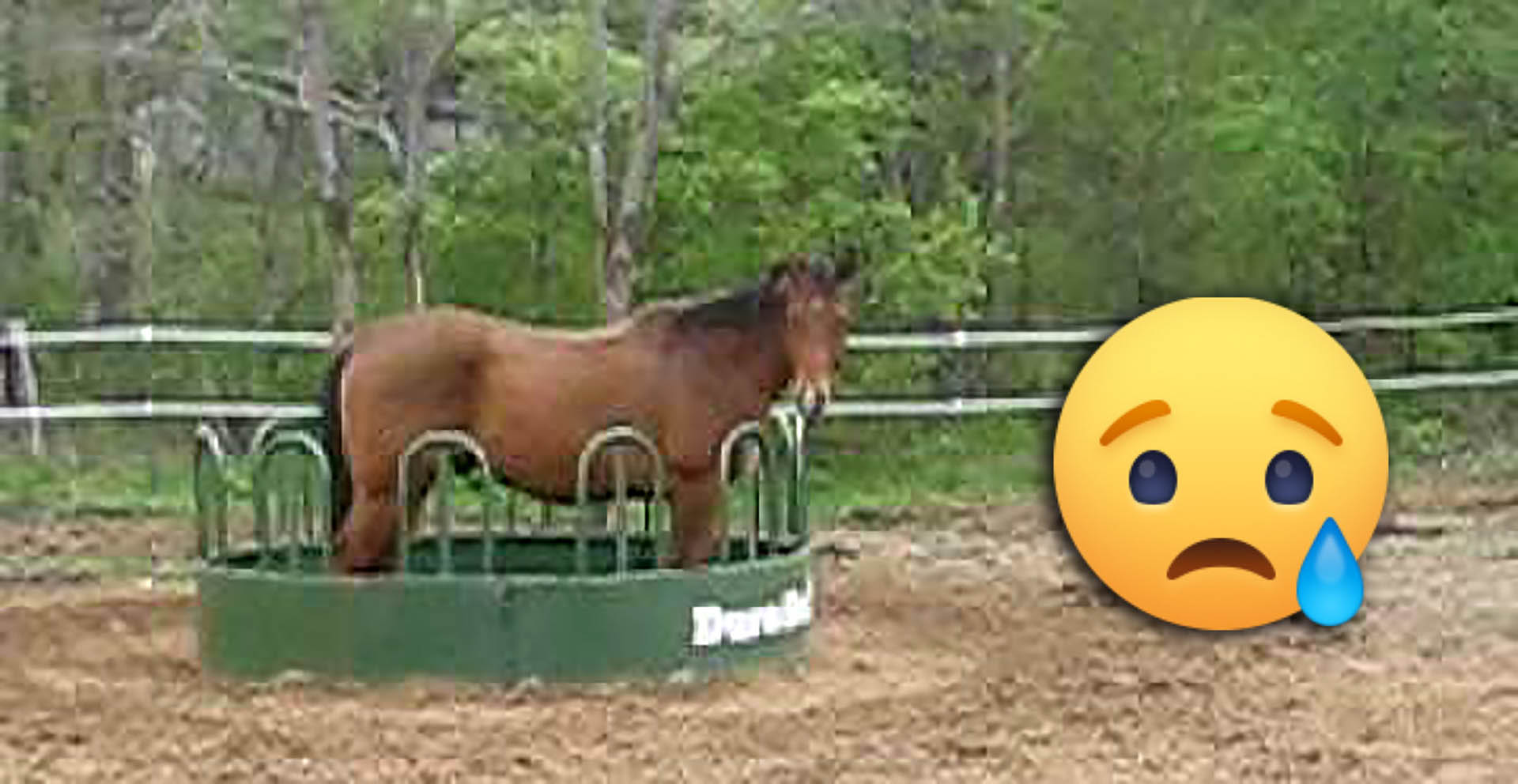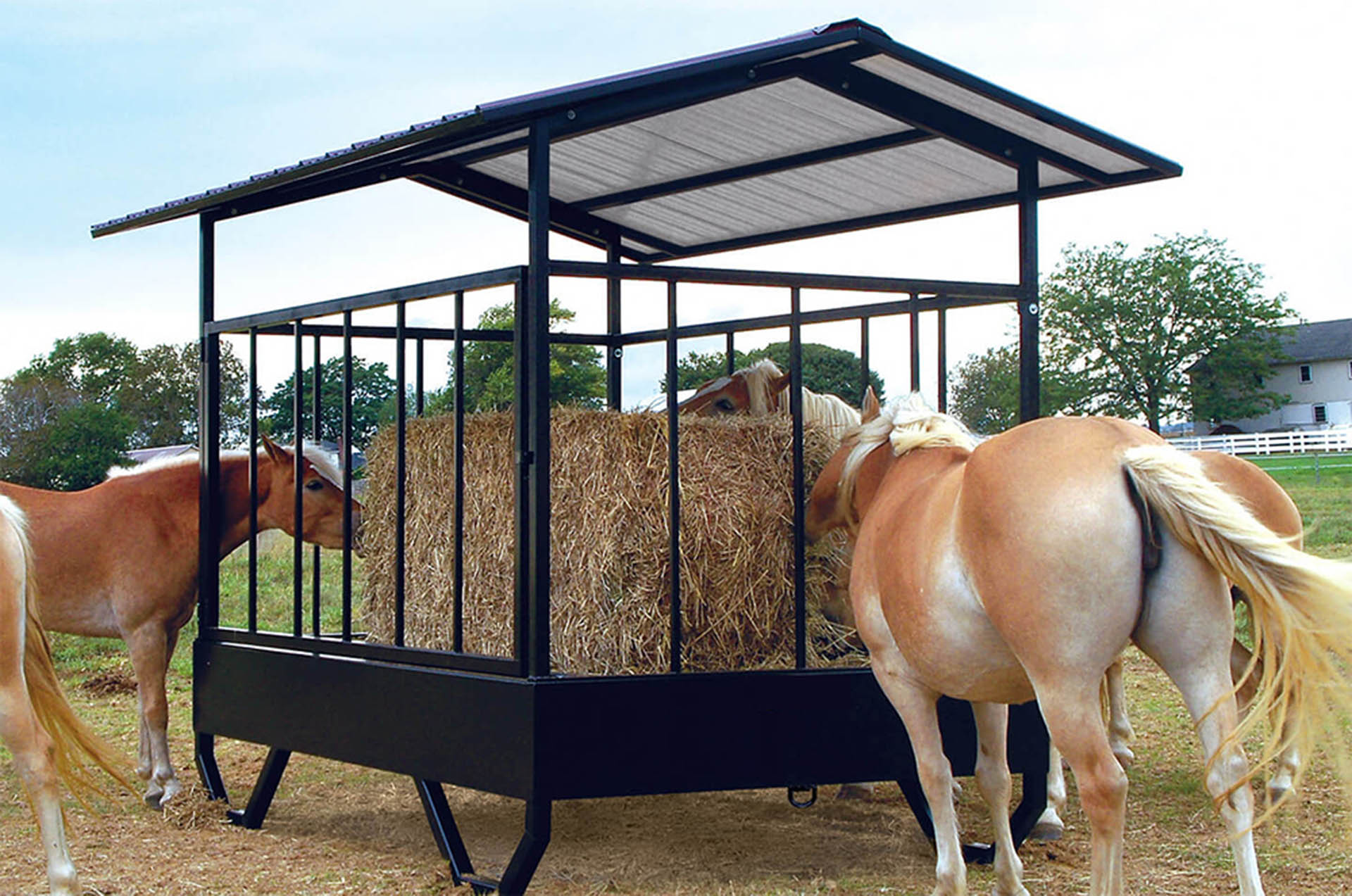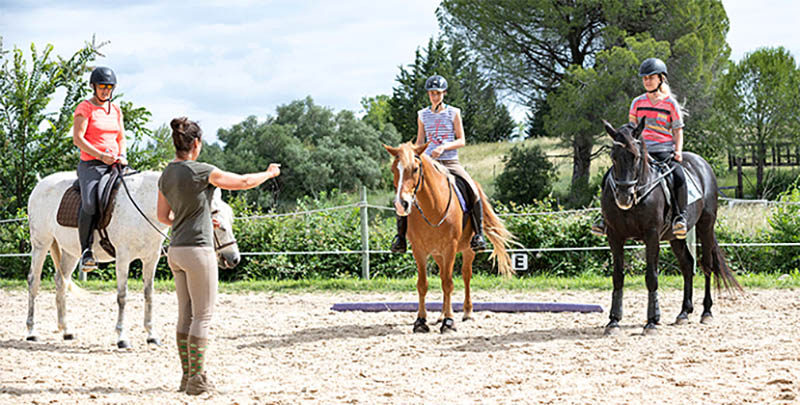As many horse owners know, utilizing an equine hay feeder can significantly reduce the waste and thus cost, of the horse hay budget. The use of a hay feeder can also be beneficial to a horse’s health, as it reduces the pace at which they feed. This encourages better mastication of the hay before ingestion, and provides chewing satisfaction, that translates to less stress on the horse both mentally and physically.
The sincere attraction of saving up to 30 percent on your hay bill is an appealing reason to opt in to purchase a hay feeder. The University of Minnesota studies showcased that not only users of large square and round bale feeders could benefit from a smaller hay bill, but also horse owners that utilize small squares could get in on the significant savings.
Horse hay feeders can be labor saving boon, but with so many options on the market, what should the diligent horse owner look for when selecting a feeder and what safety measures should they employ to mitigate the risks of injury, choke or colic to their horses. Here are a few suggestions to help the neophyte equine hay feeder user navigate the world of feeders.
Cows and Horses
Cow feeders may be more readily available and cheaper than horse feeders, but does this make them a good option for use around equines? The answer is a resounding “No!”
Cows necessarily are not as athletic as horses and certainly their legs are shorter and their activities generally more lethargic than our beloved equines. While photos posted on social media of horses standing in the center of an empty round bale feeder may seem funny, the reality is that the gaps in the feeder are large enough for equine hooves to become trapped and can result in catastrophic injury or even death.
Horses can also roll in close proximity to feeders, and their legs can quickly become lodged in the feeding gaps on the outside of the low metal or plastic cow feeder. Horses that are trapped for extended periods of time may die as a result.
Cows don’t mind wet hay. Horses on the other hand need hay to be kept reasonably dry and free of mold to prevent colic. A horse feeder will therefore offer some type of roof to keep the hay as dry as possible while a cow hay feeder will be open to the elements. Look for a horse feeder with a secure locking device or gate that will keep the bale of hay where it is put, and not come open with horse ‘houdini’ antics.
Always remove halters from horses being fed from a feeder to prevent them becoming hung up on a corner of the feeder or hooked on any part of the feeder gate. Keep the feeder reasonably full of hay so that horses are not tempted to overreach for their hay supply. Feeders should have no sharp edges.
Size of Bales Matters
Choose a feeder that is specifically designed not just for horses, but also for the size of the bales you intend to feed. A feeder that is too small for the size of the bale may become top heavy and pose a risk of the unit falling over, while one that is too large can create much frustration for the horse who cannot easily reach the hay inside.
There are a variety of sizes of equine hay feeders available so pick a size that makes sense for the size of the herd. Otherwise arguments may ensue between herd members that may result at best in a horse lower in the pecking order not having full access to the hay, or at worst result in injury during a conflict between horses hungry for their feed.
Keep It Clean
Equine hay feeders are not maintenance free. Periodic cleaning of the hay that has collected on the table beneath the bale is necessary to prevent hay becoming stale, wet or moldy at the bottom of the feeder. A brush off with a broom may suffice or a more hands on scrub down may be needed.
It is also wise to place the horse hay feeder on a gravel or stonedust pad, to prevent excessive mud build up around the feeder. As many feeders can easily be moved, the alternative of moving the unit to drier areas when needed is often a viable option. For safety it is best to remove horses from the pasture when handling/moving the larger feeders from place to place.
Entwined in Twine
All hay necessarily comes with some sort of twine. Regardless of whether it is sisal, poly or wire twine, it should always be removed from the bale after placement in the feeder. Twine can be ingested by a horse and accidents can occur where twine is not cut and large lengths of twine end up on the floor, where a horse’s legs can become entwined and suffer rope burns, tendon or other injuries as a result.
The Foal Factor
Remember that foals are notoriously adventurous and spend much time in exuberant play on their hind legs. Be extremely careful if you choose to utilize a hay feeder around foals. For obvious reasons it is not recommended.















